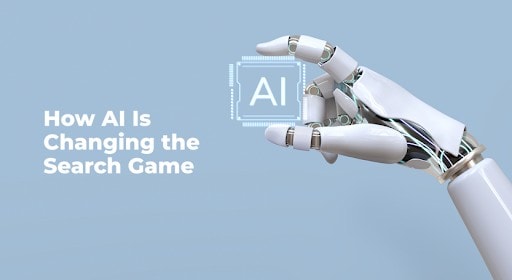As marketers using platforms like ChatGPT, Google’s Bard, Microsoft’s Bing Chat, Meta AI, or their large language models (LLMs), they must address the issue of “hallucinations” and develop strategies to mitigate them.
IBM defines AI hallucination as a phenomenon where a large language model, such as a generative AI chatbot or computer vision tool, perceives non-existent patterns or objects, resulting in nonsensical or inaccurate outputs. When users make requests for generative AI tools, they expect responses that appropriately address the prompt, such as correct answers to questions.
However, AI algorithms may sometimes produce outputs that deviate from the training data, are incorrectly interpreted by the transformer, or lack identifiable patterns, leading to what is termed as “hallucinations” in responses.
Suresh Venkatasubramanian, a professor at Brown University who contributed to the White House’s Blueprint for an AI Bill of Rights, explained in a CNN blog post that the issue arises because LLMs are trained to generate plausible-sounding answers to user prompts.

Therefore, any response that sounds plausible, regardless of its accuracy or factual basis, is considered reasonable by these models. This lack of discernment between truth and fiction can be likened to the storytelling behavior of a young child, where the child continues to produce imaginative narratives when prompted, without necessarily adhering to reality.
What Are the Causes of Generative AI Hallucinations
Generative AI hallucinations result from several issues like overfitting, bias, and poor training and model architecture.
- Bias: AI hallucinations may also arise from bias in the data used for training. If the data used to train the AI model is biased in some way, such as being skewed towards certain types of data, the model may produce hallucinations reflecting those biases.
- Poor Training and Model Architecture: Incomplete training and inappropriate model architecture can also contribute to AI hallucinations. If the generative AI model undergoes insufficient training iterations, it may not fully grasp the patterns in the training data, leading to hallucinations. Additionally, some models may be more susceptible to hallucinations than others, depending on their complexity and the nature of the training data.
- Overfitting: One such phenomenon is overfitting. Overfitting occurs when an AI system is trained on a limited dataset and then rigidly applies that training to new data. This misapplication can cause the AI to generate output not genuinely based on the input but rather influenced by its internal biases and assumptions.
Large Language Models Vs. Search Engines: What You Need to Know
The Occurrence Rate of Hallucinations
If hallucinations were considered “black swan” events—rare occurrences—marketers might acknowledge their existence but not necessarily prioritize them. However, studies conducted by Vectara reveal that chatbots fabricate details in at least 3% of interactions, and potentially as much as 27%, despite efforts made to prevent such incidents.
“We provided the system with 10 to 20 facts and requested a summary,” stated Amr Awadallah, Vectara’s CEO and a former Google executive, in an Investis Digital blog post. “It’s a fundamental issue that the system can still introduce inaccuracies.”
According to the researchers, hallucination rates may escalate when chatbots are engaged in tasks beyond mere summarization.
The Issues Posed by Generative AI Hallucinations
Firstly, they can propagate inaccurate or deceptive information, leading to adverse outcomes. For instance, a machine learning algorithm tasked with generating news articles may produce false stories, potentially misleading the public.
Secondly, AI hallucinations raise ethical concerns and questions of accountability, especially in applications where AI impacts human welfare. Determining liability for harm resulting from hallucinatory AI output can be complex.
Lastly, AI hallucinations can undermine trust in AI systems and impede their acceptance. When users perceive AI outputs as untrustworthy or unreliable, they are less inclined to embrace and use such technology, thereby limiting its potential advantages.
Recommended Actions for Marketers
Despite the potential hurdles posed by hallucinations, generative AI presents several benefits. To minimize the risk of hallucinations, we suggest the following:
- Use generative AI as a starting point for content creation: View generative AI as a tool rather than a replacement for your marketing efforts. Begin with its output, then refine and tailor it to meet your specific needs while ensuring it remains consistent with your brand voice.
- Use generative AI strategically: Integrate generative AI into your workflow to identify gaps or potential areas for improvement. However, always verify the suggestions provided by generative AI to ensure accuracy and relevance.
- Validate Information Sources: While LLMs have access to vast amounts of data, not all sources may be reliable. Verify the credibility of sources to maintain the integrity of your content.
- Conduct thorough reviews of content generated by large language models (LLMs): Collaboration and peer review are important to catch any inaccuracies or inconsistencies.
- Stay Informed about AI Advancements: Keep abreast of the latest developments in AI technology to enhance the quality of outputs and remain vigilant for any emerging issues, including hallucinations. Continuously adapt your strategies to leverage new capabilities effectively.
The Revolutionary Impact of Generative AI on the Future of Marketing
Examples of AI Hallucinations
Several instances of AI hallucinations exist, some of which are notably conspicuous. One illustrative case involves the DALL-E model created by OpenAI. DALL-E is a generative AI model designed to produce images from textual descriptions, such as “an armchair resembling an avocado” or “a cube composed of jello.”
Although DALL-E adeptly generates realistic images based on textual prompts, it occasionally produces hallucinations or surreal depictions that diverge from the original description. For instance, if a user inputs the description “a blue bird with the head of a dog,” DALL-E may generate an image matching the description but featuring peculiar attributes like human-like eyes or an unconventional posture. These hallucinatory outputs stem from the model’s reliance on learned patterns from its training data, occasionally leading to misinterpretations of input descriptions.
Another notable example is Chat GPT-3, a language model developed by OpenAI capable of generating text in response to user prompts. While Chat GPT-3 exhibits remarkable sophistication and coherence in its responses, it occasionally produces text that is nonsensical or even offensive. This phenomenon arises due to the model being trained on an extensive dataset, some of which may contain biases or objectionable content.
The Benefits of Generative AI Hallucinations
Despite their potential dangers, hallucinations can hold value, as highlighted by Tim Hwang of FiscalNote. In a blog post on Brandtimes, Hwang explained, “LLMs are deficient in areas where we typically expect computers to excel,” he says. “Conversely, LLMs excel in areas where we typically expect computers to struggle.”
He elaborated further, stating, “Therefore, using AI solely as a search tool may not be optimal, but leveraging its capabilities in storytelling, creativity, and aesthetics proves to be highly effective.”
Hwang suggests that since brand identity essentially reflects public perception, hallucinations should be viewed as a feature rather than a flaw. He proposes that it’s even possible to instruct AI to generate its interface. For instance, a marketer could task the LLM with a set of arbitrary objects and instruct it to perform actions that would typically be difficult or expensive to measure through conventional means, effectively prompting the LLM to generate novel ideas.
One example mentioned in the blog post involves assigning scores to objects based on their alignment with the brand and then using AI to predict consumers who are more likely to become loyal brand advocates based on these scores.
“Hallucinations essentially form the cornerstone of our expectations from these technologies,” Hwang remarked. “Rather than rejecting or fearing them, manipulating these hallucinations holds immense potential for enhancing advertising and marketing endeavors.”
Consumer Viewpoints on Hallucinations
An illustration of the recent usage of hallucinations comes in the form of the “Insights Machine,” a platform enabling brands to create AI personas rooted in comprehensive target audience demographics. These AI personas engage authentically, offering a spectrum of responses and perspectives.
Although AI personas may occasionally show unexpected or hallucinatory responses, their primary function lies in stimulating creativity and sparking ideas among marketers. The task of interpreting and leveraging these responses falls on humans, highlighting the fundamental role of hallucinations in shaping these revolutionary technologies.
As AI assumes a prominent role in marketing strategies, it remains susceptible to machine errors. This inherent fallibility needs human oversight—a perpetual paradox in the era of AI-driven marketing.
Would you like to read more about “Generative AI Hallucinations” related articles? If so, we invite you to take a look at our other tech topics before you leave!
Use our Internet marketing service to help you rank on the first page of SERP.
![]()











